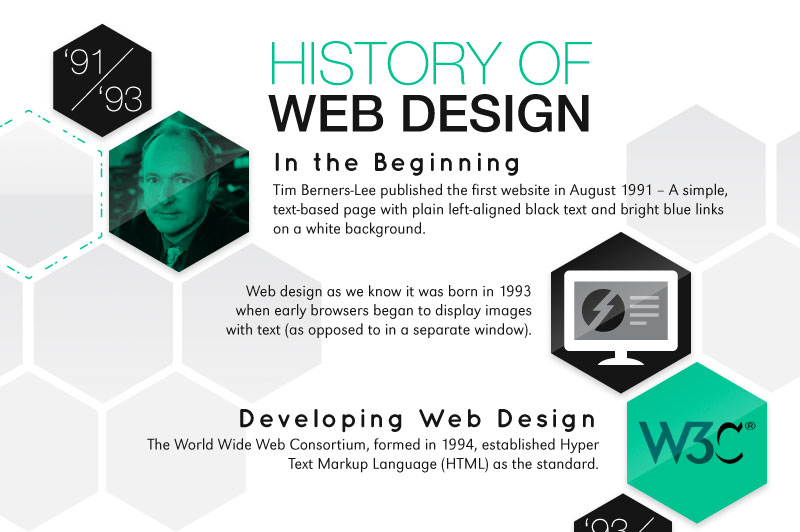Fascinated In Learning How Web Site Design Has Transformed For Many Years? Discover The Development From Fundamental, Straightforward Designs To User-Centered Approaches That Prioritize The Requirements And Preferences Of On-Line Site Visitors
Fascinated In Learning How Web Site Design Has Transformed For Many Years? Discover The Development From Fundamental, Straightforward Designs To User-Centered Approaches That Prioritize The Requirements And Preferences Of On-Line Site Visitors
Blog Article
Article Writer-Johansen Wong
In the past, web sites were basic and focused on information. Navigating was straight, and style was for desktop computers. Now, individual experience is crucial. Information guides layouts for very easy navigating. Responsive designs fit different devices. Today, dark mode minimizes pressure, and minimalist menus boost navigation. Interactive attributes engage individuals, and vibrant visuals attract attention. AI combination increases involvement. See how layout has actually developed to improve your on the internet trip.
Early Days of Website Design
In the early days of website design, simplicity reigned supreme. Websites were standard, with restricted shades, font styles, and layouts. The focus was on offering information instead of flashy visuals. Individuals accessed the web through sluggish dial-up links, so speed and performance were essential.
Navigation food selections were straightforward, normally situated on top or side of the page. Web sites were developed for desktop computers, as mobile browsing wasn't yet common. Content was king, and designers focused on simple readability over complex style components.
HTML was the main coding language utilized, and developers had to function within its restraints. Computer animations and interactive attributes were minimal compared to today's criteria. Websites were fixed, with little dynamic content or personalized customer experiences.
Surge of User-Focused Design
With the advancement of web site style, a change in the direction of user-focused style concepts has actually come to be significantly noticeable. Today, producing web sites that focus on individual experience is crucial for engaging visitors and accomplishing organization objectives. User-focused layout entails recognizing the requirements, choices, and behaviors of your target market to customize the web site's layout, web content, and includes accordingly.
Developers currently conduct complete study, such as individual surveys and usability screening, to collect insights and feedback directly from individuals. This data-driven technique helps in producing user-friendly navigating, clear calls-to-action, and visually enticing user interfaces that resonate with visitors. By positioning the customer at the facility of the layout process, web sites can supply a more individualized and delightful experience.
Responsive style has actually also become a vital element of user-focused style, ensuring that internet sites are maximized for various devices and screen sizes. This adaptability enhances ease of access and use, accommodating the diverse methods users communicate with websites today. Basically, the increase of user-focused style indicates a shift towards creating electronic experiences that prioritize the needs and assumptions of completion individual.
Modern Trends in Website Design
Discover the most up to date patterns forming web design today. One popular fad is dark setting design, supplying a streamlined and modern-day look while minimizing eye stress in low-light atmospheres. One more vital trend is minimal navigation, streamlining food selections and boosting individual experience by concentrating on essential elements. Including micro-interactions, such as animated switches or scrolling impacts, can develop a much more engaging and interactive internet site. Responsive design stays critical, making sure seamless customer experiences throughout different gadgets. Additionally, utilizing strong typography and asymmetrical formats can include aesthetic interest and accentuate details material.
Integrating AI technology, like chatbots for consumer support or individualized recommendations, boosts customer engagement and streamlines processes. Access has also come to be a considerable pattern, with designers prioritizing inclusive style methods to cater to diverse customer demands. Welcoming sustainability by optimizing internet site efficiency for speed and performance is one more emerging fad in web design. Working together with https://customerthink.com/12-content-promotion-ideas-to-supercharge-your-digital-marketing-in-2022/ and data analytics to repeat and enhance style continually is crucial for staying pertinent in the ever-evolving digital landscape. By accepting these contemporary trends, you can develop a visually attractive, user-friendly website that resonates with your target market.
Verdict
As you reflect on the evolution of internet site layout from the early days to now, you can see exactly how user-focused style has actually become the driving force behind contemporary fads.
Accept seo for it companies of adjustment and adjustment in web design, always keeping the customer experience at the forefront.
Stay present with the current trends and innovations, and never stop developing your method to develop visually magnificent and user-friendly sites.
Evolve, adapt, and produce - the future of website design is in your hands.
